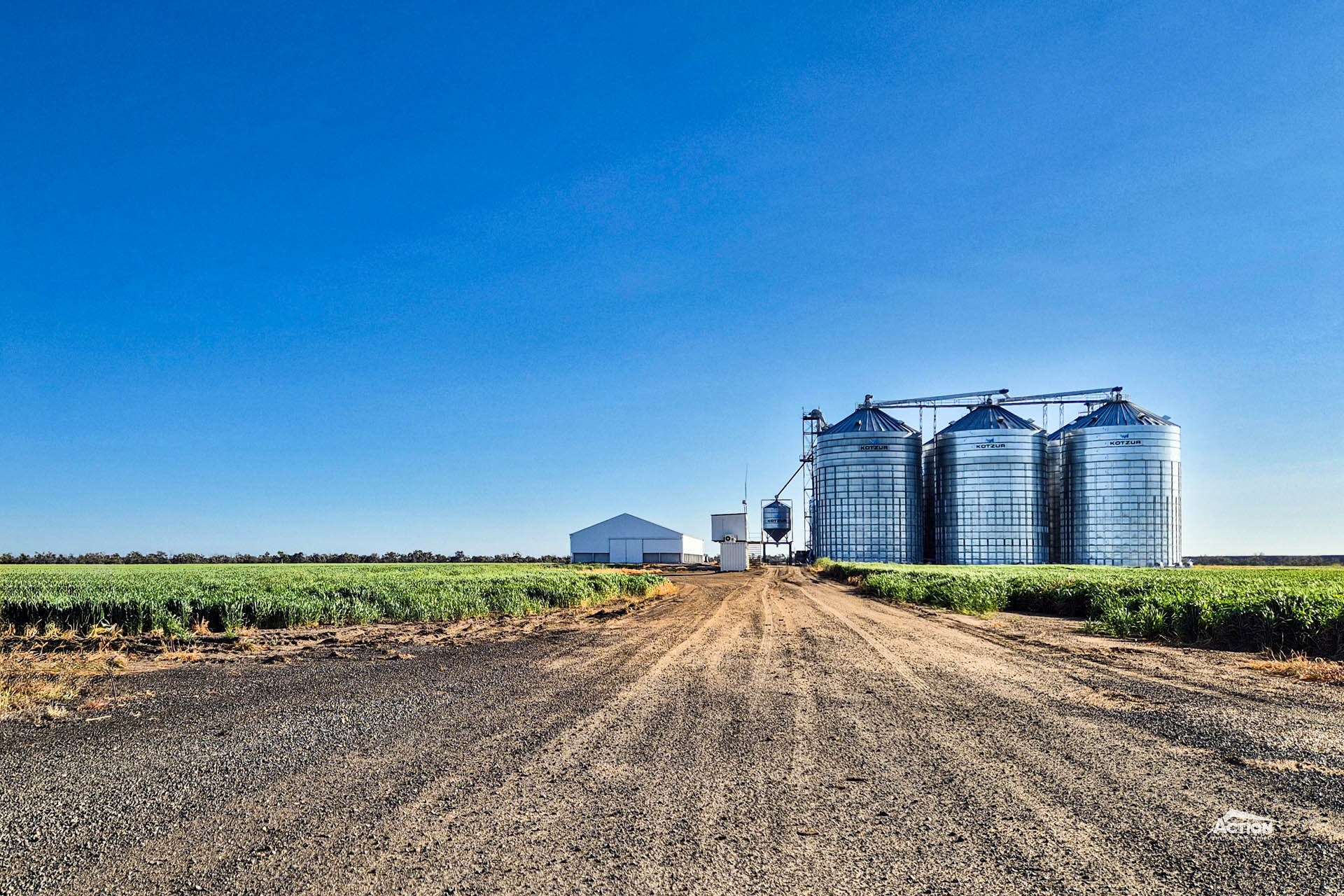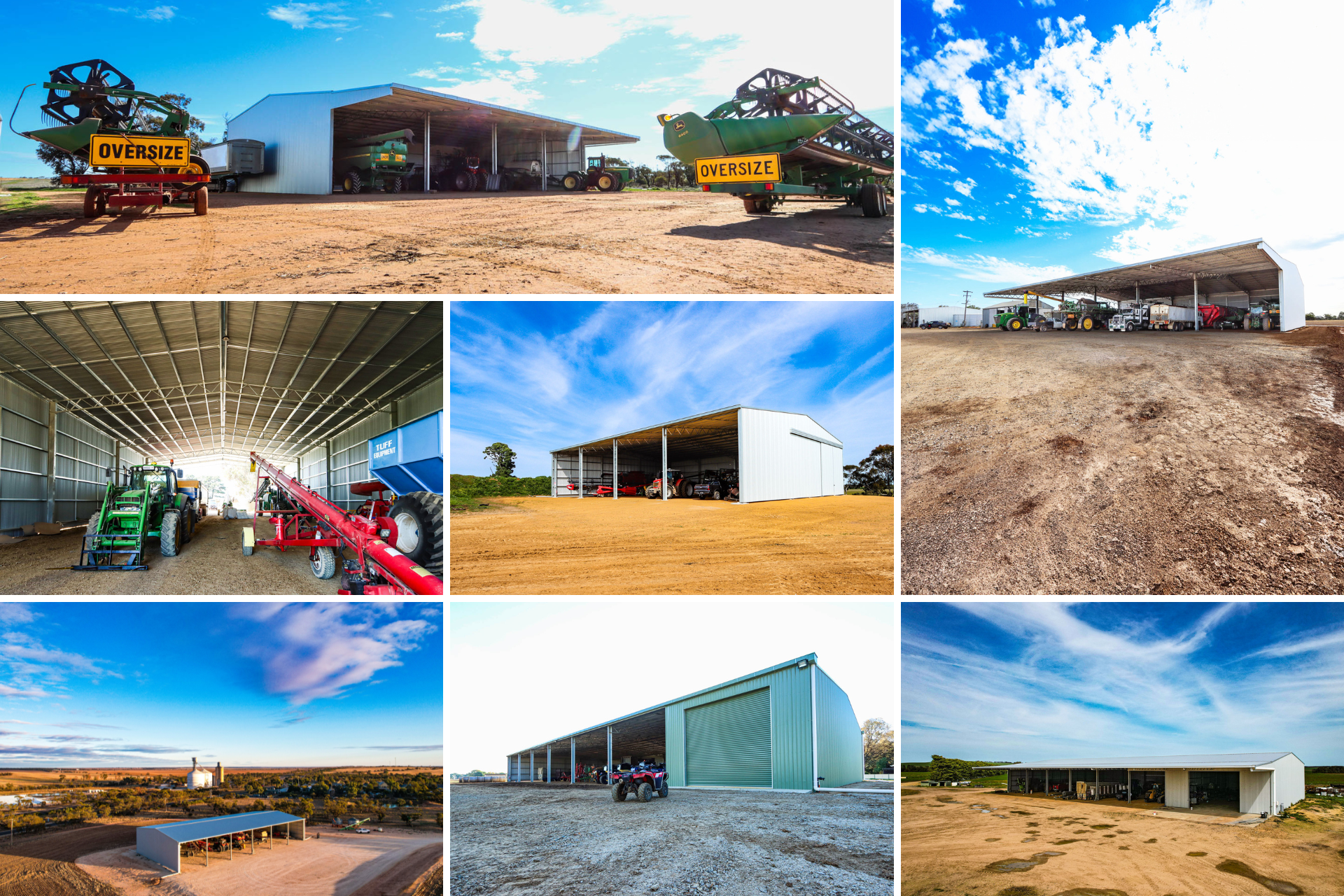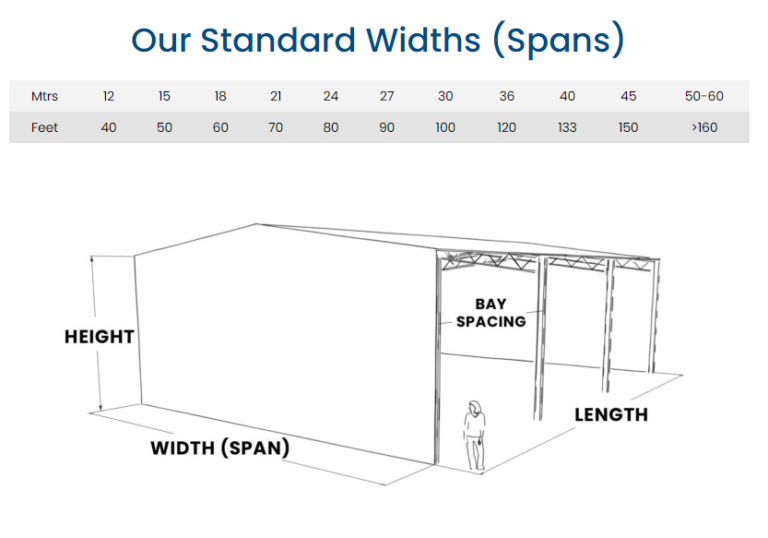Are fertiliser silos risky? Can a fertiliser shed be cost-effective? Which option provides the best protection?
These are common questions at the moment as cropping enterprises seek to limit the impact of high fertiliser prices and unreliable supply.
There are some significant benefits of having on-farm fertiliser storage, from greater control over fertiliser supply and buy prices to improving efficiencies and avoiding delays in your cropping schedule.
But what is the best way to store it? The effectiveness, efficiency, safety and versatility of your fertiliser storage can make a massive difference to your cropping operation.
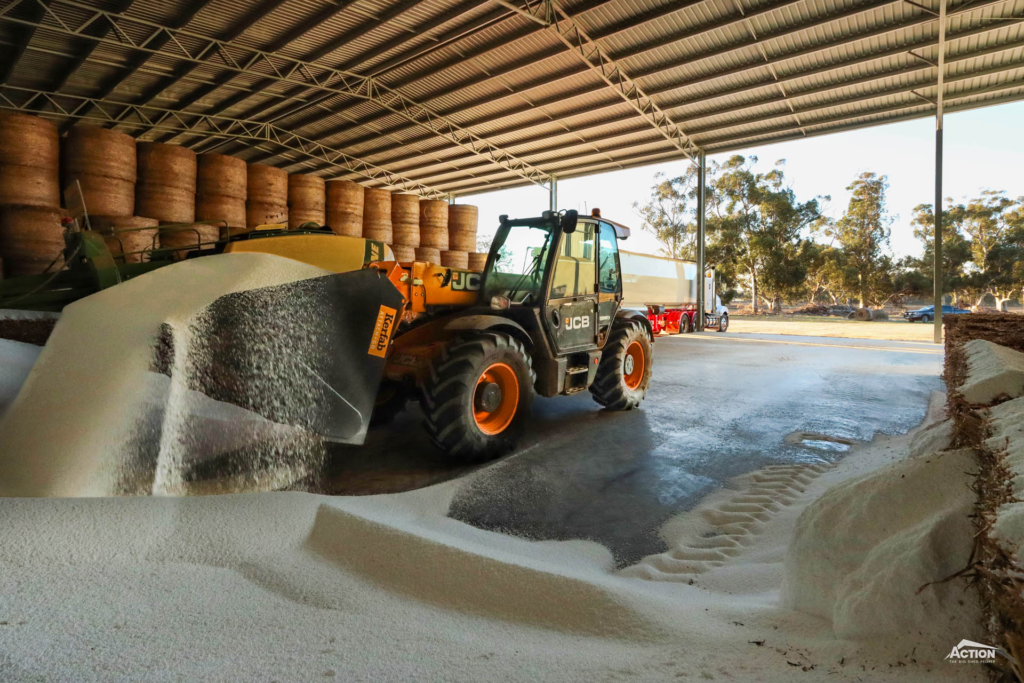
You will be aware that the most common options available for fertiliser storage are fertiliser silos, fertiliser sheds and fertiliser tanks.
In this article, we discuss storage options for granular fertilisers – silos and sheds. Which is best? Which is safest? How do they compare price-wise?
Read on to learn about the advantages and disadvantages of both options, a price-per-tonne comparison.
First up, we look at fert silos.
What Are Fertiliser Silos?
Fertiliser silos are silos designed specifically for fertiliser storage.
While most fertiliser silos are a welded steel construction, poly options are becoming more common. These feature a galvanised steel frame and may offer a higher level of corrosion protection.
Steel fert silos typically include a high build epoxy coating on the inside to improve corrosion protection. An external white painted or Colorbond coating is common for temperature control
Most silo manufacturers offer custom features such as sight glasses and the option of gas-tight sealing so that the silo can also be used for short-term grain storage.
Advantages Of Silos For Fertiliser Storage
- Transportable fertiliser silos can be moved around the farm which can be practical and efficient at cropping.
- Offer an efficient use of space particularly when only needing to store smaller quantities of fertiliser.
- May be suitable for short-term storage of MAP.
- Provide a multi-purpose storage option when designed to work for short-term grain storage.
- Unloading efficiency can be improved and fertiliser wastage reduced with cone unloading.
- Designs can usually be customised to suit your storage requirements.
Disadvantages Of Silos For Fertiliser Storage
First and foremost, silo storage is not recommended by fertiliser suppliers such as Incitec Pivot.
This is because fertilisers such as DAP and blends absorb moisture during storage which can lead to the silo collapsing, making unloading the silo (often a difficult task) a high safety risk.
Reading through your fertiliser paperwork and storing as per the manufacturer’s instructions could prevent a tragedy from occurring.
Other disadvantages include:
- Prone to developing leaks, depending on the size and construction. This is a safety concern and leads to fertiliser wastage.
- Limited capacity options, particularly for transportable silos – usually between 50 to 80 tonnes. This also increases the cost per tonne of storing fertiliser on-farm.
- Short warranties and lifespans due to ineffective corrosion protection or incorrect use such as storing DAP or blends or storing MAP long term.
- Long lead times for new silos, ranging from six months to eighteen months depending on the manufacturer.
- Limited to storing one product.
Price is another important factor when it comes to investing in on-farm storage. What is most cost-effective? How do I get the best value for money?
Next up we provide an overview of fertiliser silo prices and how they work out on a dollar-per-tonne figure.
How Much Does A Fertiliser Silo Cost?
The cost of a fertiliser silo does vary between silo manufacturers, the type of construction and the level of customisation you choose.
Given that fert silos only store a small amount of fertiliser, this can result in a higher cost-per-tonne for storing on-farm.
For example, a 56-tonne fertiliser silo can cost approx. $25,000 – $29,000 including freight and ladder. This works out to be approx. $450 – $500 per tonne.
By comparison, a 500-tonne Action fertiliser shed usually works out to be $370 – $440 per tonne and can be a versatile investment, which leads us to our next discussion point – fertiliser sheds.
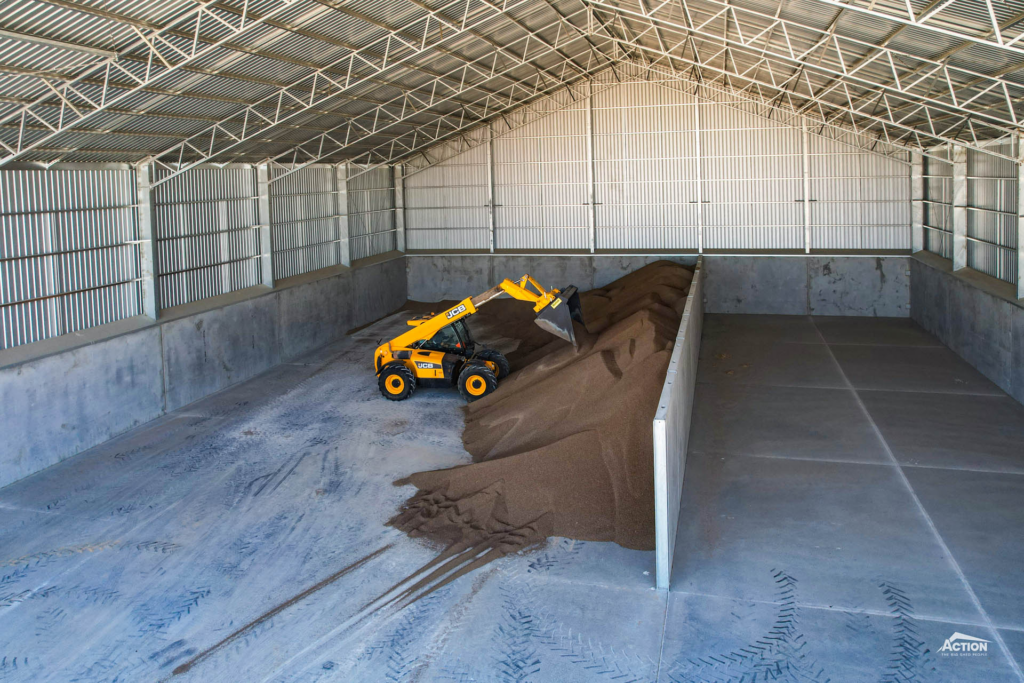
What Are Fertiliser Sheds?
Action fertiliser sheds are sheds designed specifically for storing bulk fertiliser on-farm, starting at a 400-tonne capacity.
For fertiliser storage quantities smaller than 400 tonne capacity, we recommend installing concrete panels in one or more bays of a shed.
This is a great way to create a versatile asset.
Watch the video below learn how John Bennett’s multi-purpose shed provides a versatile storage option all year round.
John Bennett’s Versatile Hay Shed With Concrete Panels
For bulk fertiliser sheds, there are several configuration options available including:
- An open gable shed with a steep roof pitch for tipping inside. This design typically includes an additional bay for weather protection and can be customised with sliding doors.
- A fully enclosed shed with sliding doors for access in the gable end – an outrigger system can be installed so that the sliding doors can be stacked out of the way.
- A fully enclosed shed with sliding doors for access along the long sided. This configuration often works well for segregation or dual-purpose grain and fertiliser storage sheds.
All these options include a fully hot dip galvanized frame and concrete panels for corrosion protection. Concrete panels also protect the cladding from machinery damage and work well for segregating products.
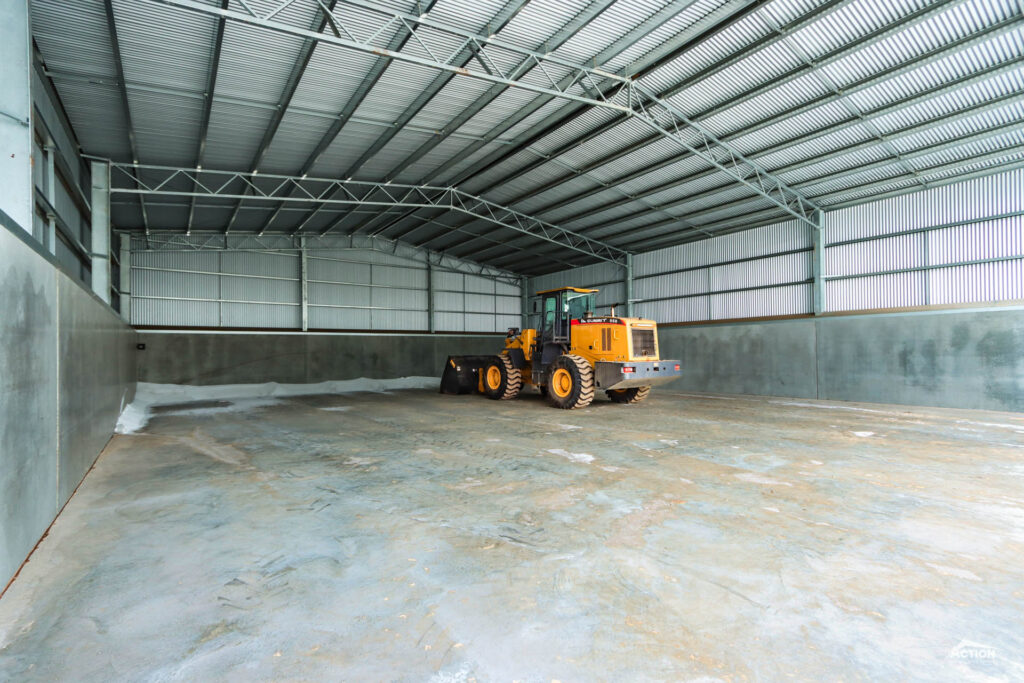
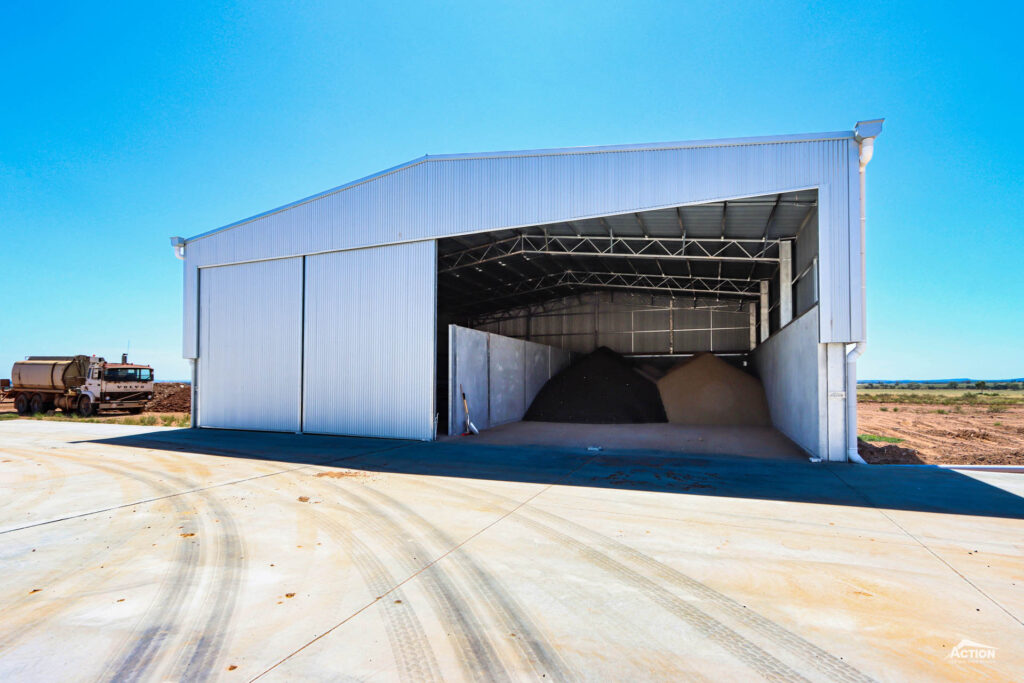
Advantages Of Fertiliser Sheds
On-farm fertiliser sheds are popular projects in 2024 as cropping enterprises look to take advantage of the many benefits.
- The recommended way to store common granular fertilisers including urea, MAP, DAP and DAP blends.
- A cost-effective storage option per tonne and typically the larger the shed the more cost-effective it will be.
- Concrete panels allow the shed to be thoroughly cleaned out, which reduces wastage. This also means the shed is a versatile asset that can be used for temporary grain storage at harvest or machinery storage after cropping.
- Your shed can be customised with extra height, steep roof pitches and sliding door outriggers to ensure easy loading and unloading. This saves you time and stress and helps avoid delays at cropping.
- Provide good weather protection, which can be achieved by enclosing the shed with sliding doors or adding an extra bay onto the open gable end.
- Long life span thanks to concrete panels and a fully hot dip galvanised steel frame (heavy-duty UB columns and open web trusses). This provides the best possible protection from corrosion and damage.
- Permanent or movable concrete panel walls can be used to segregate multiple products, giving you greater flexibility with what you store in the shed.
- Short lead times typically range from four to six months. There is also a range of Standard Action Fertiliser Sheds which helps speed up the manufacturing process – these can also be tweaked to better suit your storage requirements.
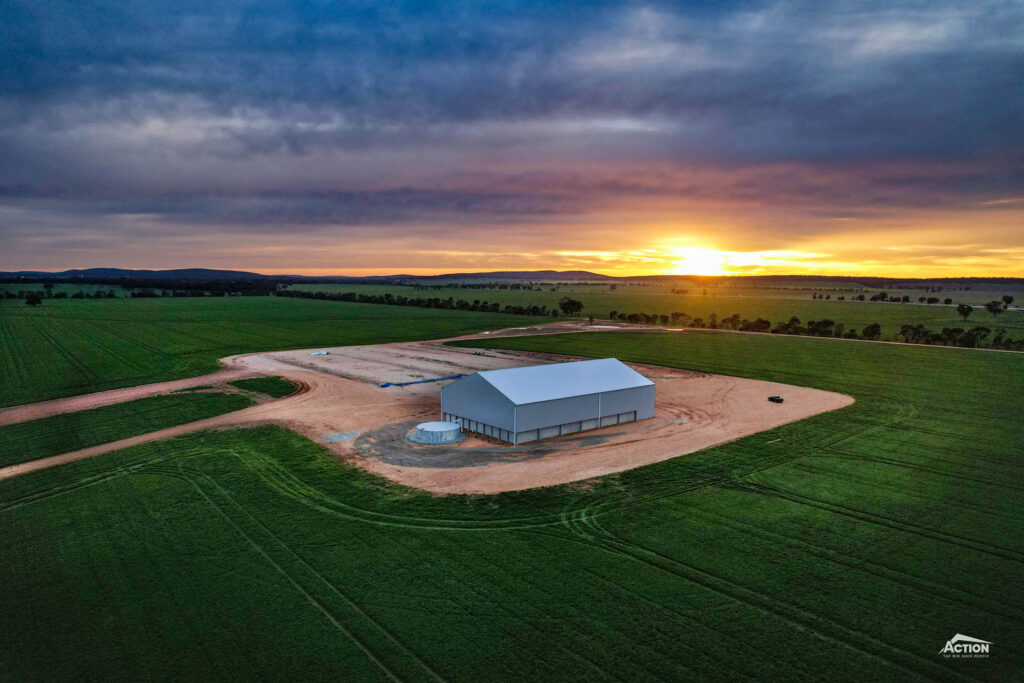
However, to make this a fair, open and honest comparison let’s look at some of the potential downsides.
Disadvantages Of Fertiliser Sheds
- Not transportable which may be limiting if you have multiple properties.
- Sizes typically start at around 400 tonnes storage which may not be a requirement for you.
- Not suited to liquid fertiliser storage.
- There are limited options for sealing the sheds, which you may require if you want to store high-grade wheat in the shed at harvest.
- It still takes time to load and unload.
So, we know fertiliser sheds are cost-effective and low cost per tonne – but how much do fertiliser sheds cost/
Let’s find out.
How Much Does A Fertiliser Shed Cost?
The cost-effectiveness of a fertiliser shed does depend on both the size and configuration of your shed.
Generally, the cost-per-tonne ranges from around $ 400 per tonne for smaller sheds to around $ 200 per tonne for larger sheds.

What is the verdict? By now you might have a clear picture of what the best option is for your on-farm fertiliser storage. Below is a summary of the main points to keep in mind.
The Verdict – Which Is Better? Fert Silos Or Sheds?
As our discussion throughout this article shows, both fertiliser sheds and silos have their advantages.
The number one thing to keep in mind is safety – and the fact is that fertiliser silos are a high safety risk and are not endorsed by fertiliser suppliers.
Having said that, if you are storing a small amount of MAP short-term, a silo could be a good option. This has the advantage of being able to be moved around the farm and would be a smaller financial outlay than shed too.
But check the storage recommendations for your fertiliser before committing to this.
It is also a good idea to have a clear understanding of your storage requirements. If a long asset life span, short lead times, versatility, segregated bulk storage, safety and ease of loading and unloading are priorities for you – then a fertiliser shed will tick all these boxes.
We hope this article has provided you with some food for thought and some helpful information that you can use when you are expanding your on-farm fert storage.
Listed below are some additional fertiliser storage resources – including a handy storage calculator.
Top Fertiliser Shed Questions, Answered
In this video, Jason and Lennie answer common questions including: What Is The Best Fertiliser Shed Design? and What Size Fertiliser Shed Do I Need?
Fertiliser Shed Calculator
Use the farm shed calculator for fert storage to help you determine the best shed size for storing fert, .
Firstly, put in your shed size and fert type in the left side fields. Next, the storage volume and total tonnage will be displayed on the right.
Fertiliser Shed Inspiration Gallery
For more resources, check out the Learning Hub. Or if you have further questions about fertiliser silos and sheds, talk to one of our building consultants on 1800 687 888 – we would love to hear from you.


